General News
Steve Corbató Named Director of Cyberinfrastructure Strategic Initiatives at the University of Utah
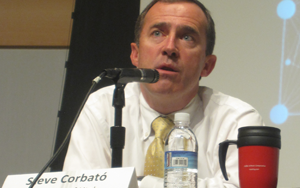 The Scientific Computing and Imaging Institute congratulates Dr. Steve Corbató on being named Director of Cyberinfrastructure Strategic Initiatives at the University of Utah. Dr. Corbató has served as the SCI Institute's Associate director since May of 2006. Steve will report directly to VP of Information Technology, Steve Hess and help the University with future cyberinfrastructure plans. While Steve will be moving to the INSCC Building, we'll definitely still see him on a regular basis as we'll work together on future computing initiatives. Steve is already working on multiple projects and ideas with SCI Institute and other University of Utah faculty.
The Scientific Computing and Imaging Institute congratulates Dr. Steve Corbató on being named Director of Cyberinfrastructure Strategic Initiatives at the University of Utah. Dr. Corbató has served as the SCI Institute's Associate director since May of 2006. Steve will report directly to VP of Information Technology, Steve Hess and help the University with future cyberinfrastructure plans. While Steve will be moving to the INSCC Building, we'll definitely still see him on a regular basis as we'll work together on future computing initiatives. Steve is already working on multiple projects and ideas with SCI Institute and other University of Utah faculty.
Center for Computational Earth Sciences at the SCI Institute
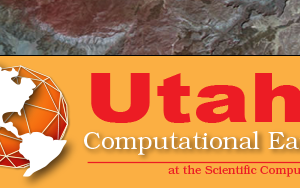 Ross Whitaker (PI), Chuck Hansen, Claudio Silva, Valerio Pascucci, and Greg Jones have been awarded funding to create the Center for Computational Earth Sciences at the SCI Institute.
Ross Whitaker (PI), Chuck Hansen, Claudio Silva, Valerio Pascucci, and Greg Jones have been awarded funding to create the Center for Computational Earth Sciences at the SCI Institute.
Visualizing Election Polls
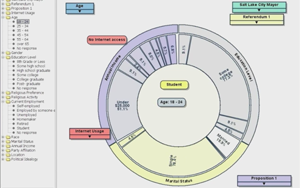 A New, Animated, Interactive Way to Analyze Opinion Data
A New, Animated, Interactive Way to Analyze Opinion DataMedia Contacts
Oct. 6, 2008 - Do you want to know the percentage of white women who support vice presidential candidate Sarah Palin? What about college-educated versus high school-educated white women? Or those who also hunt?
University of Utah computer scientists have written software they hope eventually will allow news reporters and citizens to easily, interactively and visually answer such questions when analyzing election results, political opinion polls or other surveys.
NVIDIA Recognizes University Of Utah as a CUDA Center Of Excellence
 University of Utah Latest in a Growing List of Exceptional Schools Demonstrating Pioneering Work in Parallel Computing
University of Utah Latest in a Growing List of Exceptional Schools Demonstrating Pioneering Work in Parallel ComputingSanta Clara, CA & Salt Lake City, UT - July 31, 2008 - NVIDIA Corporation, the worldwide leader in visual computing technologies, and the University of Utah today announced that the university has been recognized as a CUDA Center of Excellence, a milestone that marks the beginning of a significant partnership between the two organizations.
Remembering Gene Golub - Salt Lake City, Utah
Those attending the event in Salt Lake City were:
Nelson Beebe, Department of Mathematics, University of Utah
Adam Bargteil - Carnegie Mellon University
Martin Berzins, School of Computing and SCI Institute, University of Utah
Mary Anne Berzins, Human Resources, University of Utah
Elaine Cohen, School of Computing, University of Utah
Kate Coles, Department of English, University of Utah
Steve Corbato, Office of Information Technology, University of Utah
Chuck Hansen, School of Computing and SCI Institute, University of Utah
Chris Johnson, School of Computing and SCI Institute, University of Utah
Greg Jones, SCI Institute
Tom Lyche, Department of Informatics, University of Oslo
Rich Riesenfeld, School of Computing, University of Utah
Kris Sikorski, School of Computing, University of Utah
Claudio Silva, School of Computing and SCI Institute, University of Utah
Barry Weller (Gene's Cousin), Department of English, University of Utah
Autism Research Profiled in Salt Lake Magazine
 The February 2008 Issue of Salt Lake magazine includes a profile of groundbreaking research being conducted at the University of Utah on the problem of Autism. Advancements in brain image analysis techniques developed by SCI researchers Guido Gerig, Ross Whitaker and P. Thomas Fletcher are specifically mentioned. (print version only)
The February 2008 Issue of Salt Lake magazine includes a profile of groundbreaking research being conducted at the University of Utah on the problem of Autism. Advancements in brain image analysis techniques developed by SCI researchers Guido Gerig, Ross Whitaker and P. Thomas Fletcher are specifically mentioned. (print version only)
Guido Gerig Joins Scientific Computing and Imaging Institute
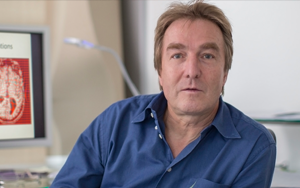 Guido Gerig joins the University of Utah's Scientific Computing and Imaging (SCI) Institute as a USTAR faculty member. The Scientific Computing and Imaging (SCI) Institute has established itself as an international research leader in the areas of scientific computing, scientific visualization, and image processing. USTAR is an innovative, aggressive and far-reaching effort to bolster Utah's economy with high-paying jobs and keep the state vibrant in the Knowledge Age. The USTAR Support Coalition and the Salt Lake Chamber sought public and private investment to recruit world-class research teams in carefully targeted disciplines. These teams will develop products and services that can be commercialized in new businesses and industries.
Guido Gerig joins the University of Utah's Scientific Computing and Imaging (SCI) Institute as a USTAR faculty member. The Scientific Computing and Imaging (SCI) Institute has established itself as an international research leader in the areas of scientific computing, scientific visualization, and image processing. USTAR is an innovative, aggressive and far-reaching effort to bolster Utah's economy with high-paying jobs and keep the state vibrant in the Knowledge Age. The USTAR Support Coalition and the Salt Lake Chamber sought public and private investment to recruit world-class research teams in carefully targeted disciplines. These teams will develop products and services that can be commercialized in new businesses and industries.
Neuro Image Analysis Team Joins SCI Institute
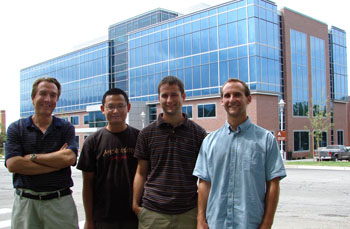 (L-R) Dr. Guido Gerig, Dr. Marcel Prastawa, Casey Goodlett, Sylvain Gouttard |
SCI to Collaborate on Three New SciDAC Centers
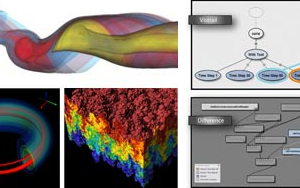 The SCI Institute is pleased to announce that it will be participating in three DOE SciDAC 2 research centers.
The SCI Institute is pleased to announce that it will be participating in three DOE SciDAC 2 research centers.The Visualization and Analytics Center for Enabling Technologies (VACET), includes SCI Institute faculty Chris Johnson (Center Co- PI with Wes Bethel from LBNL), Chuck Hansen, Steve Parker, Claudio Silva, Allen Sanderson and Xavier Tricoche. The center will focus on leveraging scientific visualization and analytics technology to increase scientific productivity and insight. It will be challenged with resolving one of the primary bottlenecks in contemporary science, making the massive amounts of data now available to scientists accessible and understandable. Advances in computational technology have resulted in an "information Big Bang," vastly increasing the amount of scientific data available, but also creating a significant challenge to reveal the structures, relationships, and anomalies hidden within the data. The VACET Center will respond to that challenge by adapting, extending, creating when necessary, and deploying visualization and data understanding technologies for the scientific community.
SCI Grad Student Helps Solve Open Problem in Computational Geometry
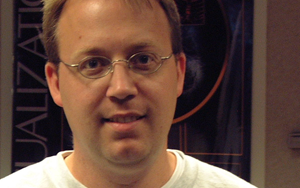 SCI graduate student Jason F. Shepherd and coauthor Carlos D. Carbonera have published a solution to Problem #27 of The Open Problems Project's list of unresolved problems in computational geometry. The question is:
SCI graduate student Jason F. Shepherd and coauthor Carlos D. Carbonera have published a solution to Problem #27 of The Open Problems Project's list of unresolved problems in computational geometry. The question is:
Can the interior of every simply connected polyhedron whose surface is meshed by an even number of quadrilaterals be partitioned into a hexahedral mesh compatible with the surface meshing?The solution of Carbonera and Shepherd settles the practical aspects of the problem by demonstrating an explicit algorithm that extends a quadrilateral surface mesh to a hexahedral mesh where all the hexahedra have straight segment edges. This work did leave one aspect of the problem open. The authors did not resolve the question of achieving a hexahedral mesh with all planar faces. The collaborators are now working on a revision that should close this problem definitively.
C. D. Carbonera, J.F. Shepherd, "A Constructive Approach to Constrained Hexahedral Mesh Generation," Proceedings, 15th International Meshing Roundtable, Birmingham, AL, September 2006.
Dr. Sarang Joshi joins SCI Institute
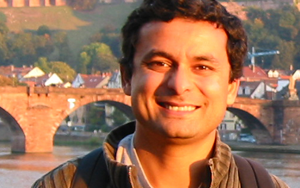 Dr. Sarang Joshi has joined SCI as an Associate Professor of the Department of Bio Engineering. Before coming to Utah, Dr. Joshi was an Assistant Professor of Radiation Oncology and an Adjunct Assistant Professor of Computer Science at the University of North Carolina in Chapel Hill. Prior to joining Chapel Hill, Dr. Joshi was Director of Technology Development at IntellX, a Medical Imaging start-up company which was later acquired by Medtronic. Sarang's research interests are in the emerging field of Computational Anatomy and have recently focused on its application to Radiation Oncology. Most recently he spent a year on sabbatical at DKFZ (German Cancer Research Center) in Heidelberg, Germany, as a visiting scientist in the Department of Medical Physics where he focused on developing four dimensional radiation therapy approaches for improved treatment of Prostate and Lung Cancer.
Dr. Sarang Joshi has joined SCI as an Associate Professor of the Department of Bio Engineering. Before coming to Utah, Dr. Joshi was an Assistant Professor of Radiation Oncology and an Adjunct Assistant Professor of Computer Science at the University of North Carolina in Chapel Hill. Prior to joining Chapel Hill, Dr. Joshi was Director of Technology Development at IntellX, a Medical Imaging start-up company which was later acquired by Medtronic. Sarang's research interests are in the emerging field of Computational Anatomy and have recently focused on its application to Radiation Oncology. Most recently he spent a year on sabbatical at DKFZ (German Cancer Research Center) in Heidelberg, Germany, as a visiting scientist in the Department of Medical Physics where he focused on developing four dimensional radiation therapy approaches for improved treatment of Prostate and Lung Cancer.Dr. Joshi received his D.Sc. in Electrical Engineering from Washington University in St. Louis. His research interests include Image Understanding, Computer Vision and Shape Analysis. He holds numerous patents in the area of image registration and has over 50 scholarly publications.




